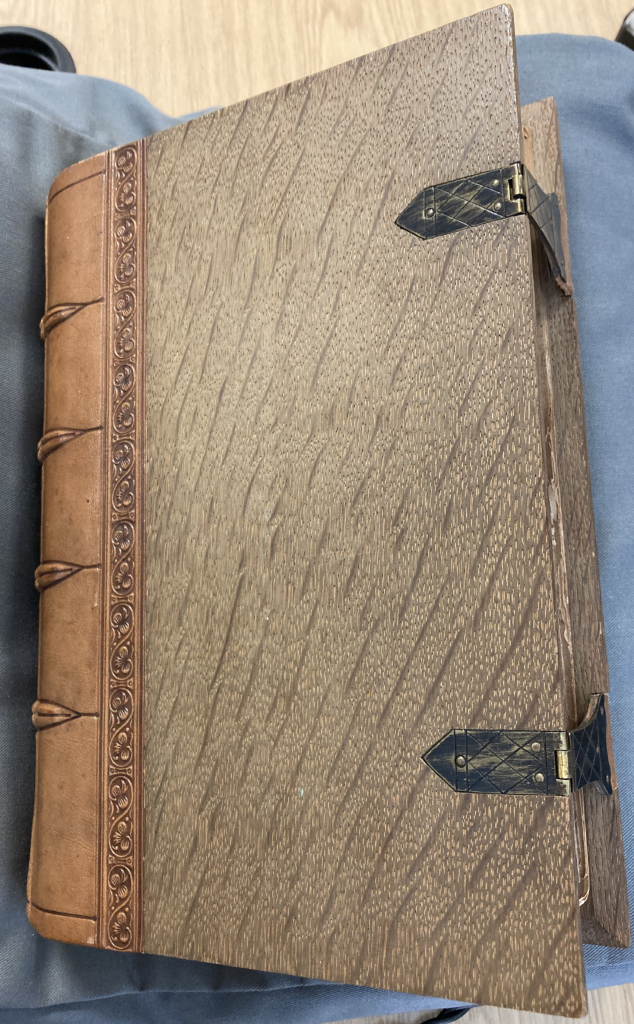Ranulf Higden (c.1280-1364) was a Benedictine monk and a chronicler. He lived, and is buried, at the monastery of St. Werburgh, now Chester Cathedral.
Thought to have been completed around 1363, Higden’s great work, the Polychronicon, belongs to that most ambitious category of book – the universal history. In imitation of the seven days of Genesis, it is formed of seven books: the first is a geographical survey of the world, whilst the next six provide a history of the Christian world, proceeding chronologically from Creation to the beginning of the reign of Edward III (1327), with an increasingly British focus. As is usual for a medieval chronicle, it draws heavily on other sources, selecting from them and adding to them as others would go on to add their own additions to Higden’s work.
Testament to its importance and popularity, the Polychronicon was copied out “hundreds, if not thousands of times during the later fourteenth and fifteenth centuries” (Given-Wilson, p. xxii). Often, in the process, the text was brought up to date with the addition of the history of the intervening period, making the title of this work – ‘chronicle of many times’ – particularly apt.
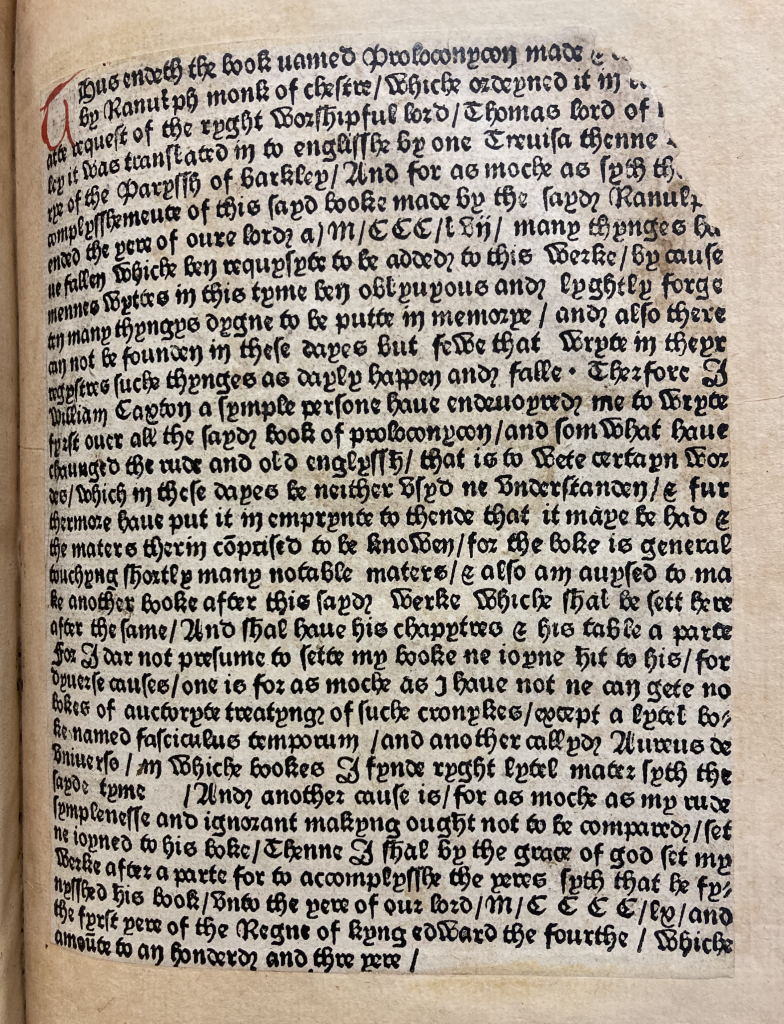
The continued widespread use of Higden’s Polychronicon was further cemented in 1482 when William Caxton (c.1422-1491), England’s first printer, chose to stabilise in print the first English translation of Higden’s work, which was made by John of Trevisa in the 1380s. Trevisa’s translation included an extension taking the history of the final book of the Polychronicon up to 1360. 100 years later, Caxton made his own contribution to this well-established historiographical tradition, with a continuation covering the events of the intervening century up to 1460. Caxton named this appendix the Liber Ultimus.
Caxton was also responsible for modernising Trevisa’s English, as well as for the addition of a prologue, epilogue, and indexes. Like so many of his contemporaries then, Caxton was a man of many talents – printer, translator, editor, chronicler, author, businessman, diplomat.
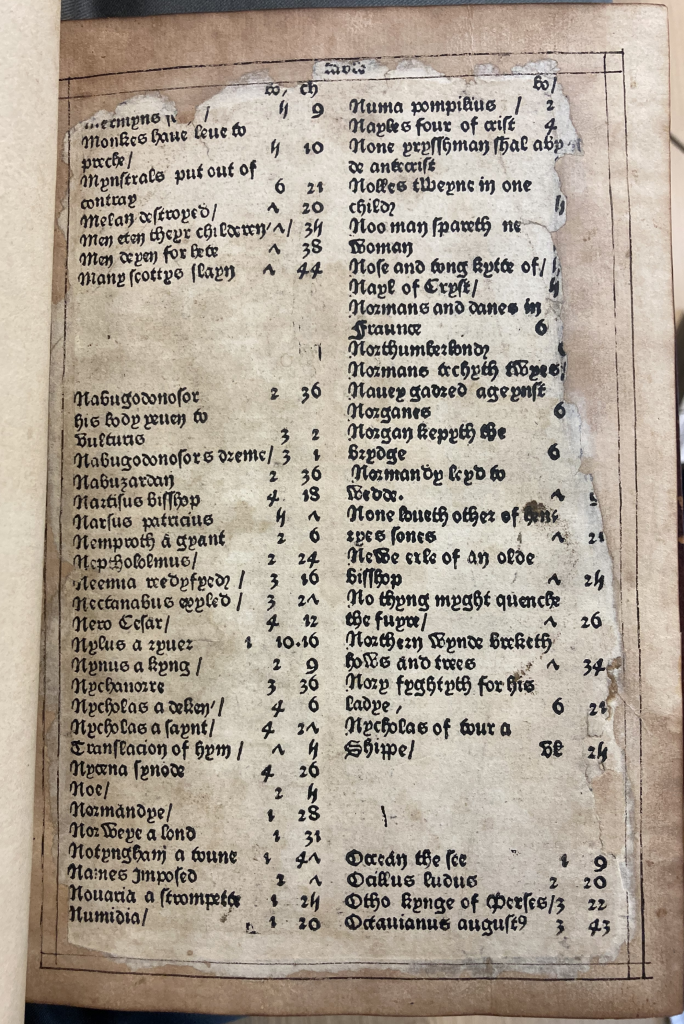
The University of Liverpool holds two incomplete copies of this first printed English edition of the Polychronicon. Caxton’s edition was, in its entirety, a chunky text, numbering 450 folio leaves. Regular use would also seem a likely explanation as to why both of our copies are significantly incomplete (see the catalogue record for details).
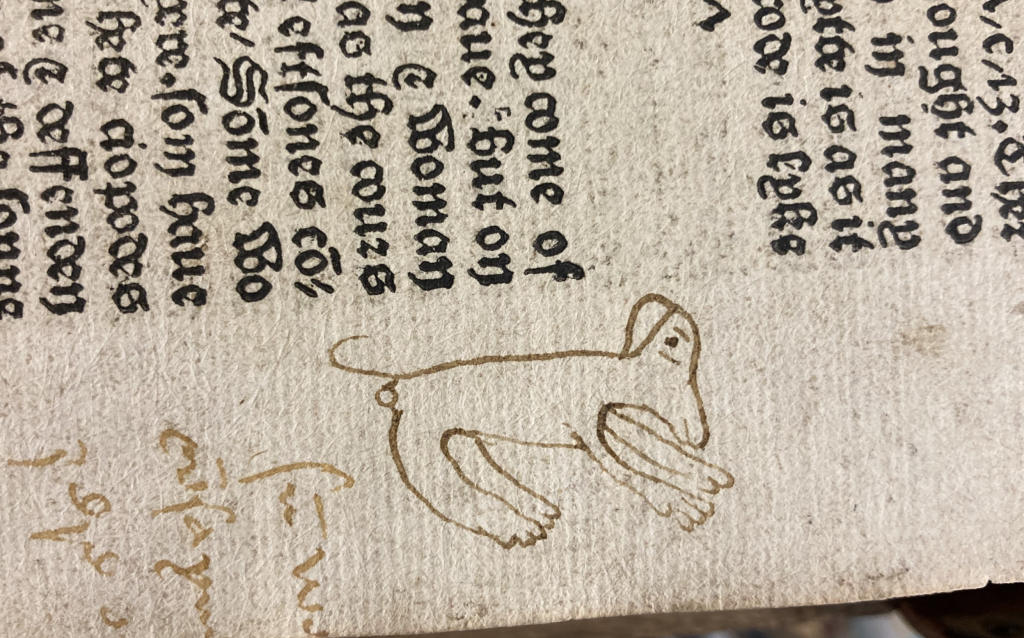

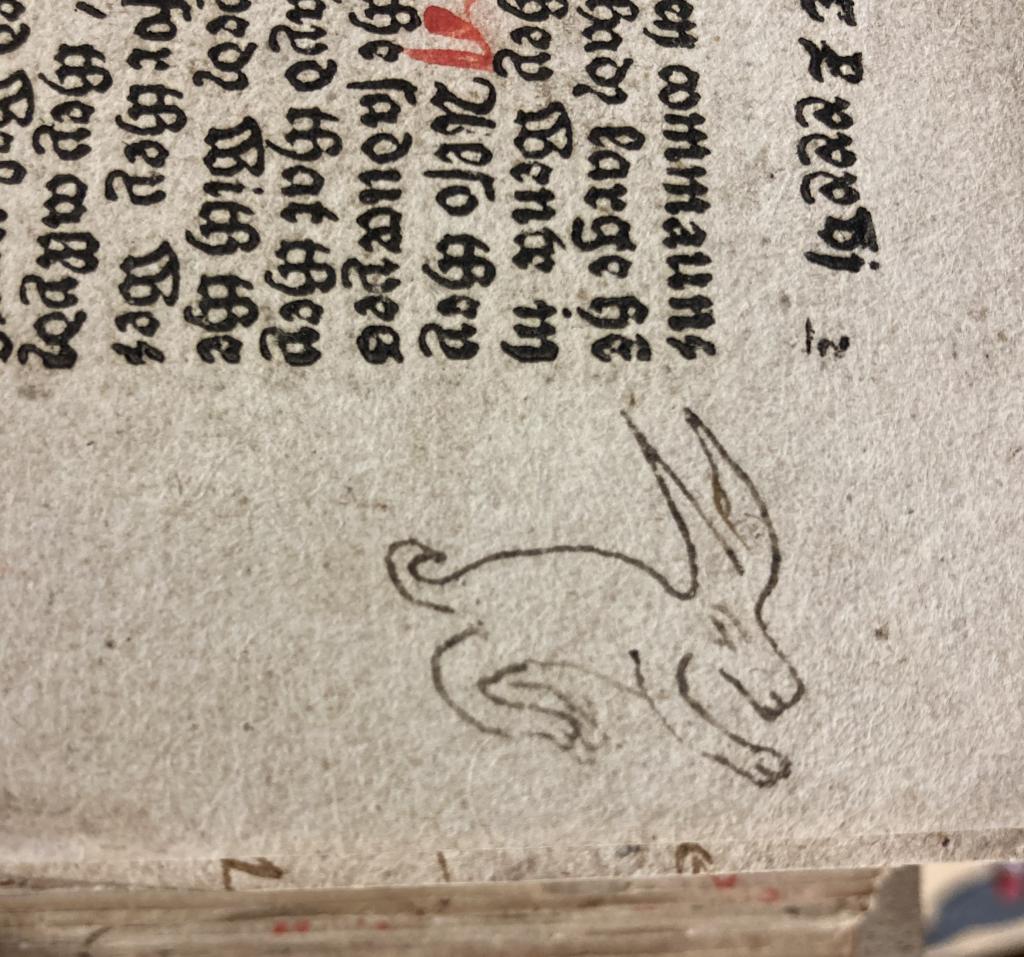
The University of Liverpool copy at Inc.CSJ.D03 provides strong evidence for the argument that this text continued to be read and re-read long after the 15th century, containing, as it does, numerous marks of ownership in a variety of later hands. This includes a particularly large number of inscriptions. Perhaps indicating a family connection there is a Samuel Richardson, James Richardson and Richard Richardson, but the book is also signed by Thomas Thomson, John Strickland, John Piper, John Matthews, and many more. It would seem unlikely that the book was bought and sold quite so many times in such a relatively short time-period. Instead, contrary to what we might expect or demand of the margins of a book held in an shared library nowadays, this abundance of inscriptions appears to suggest institutional ownership.
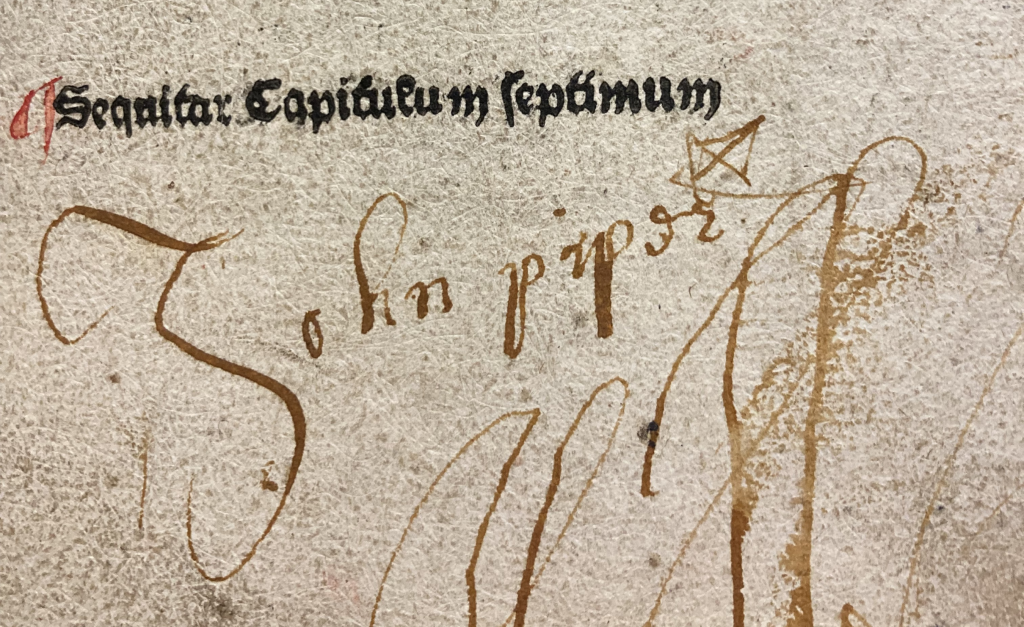
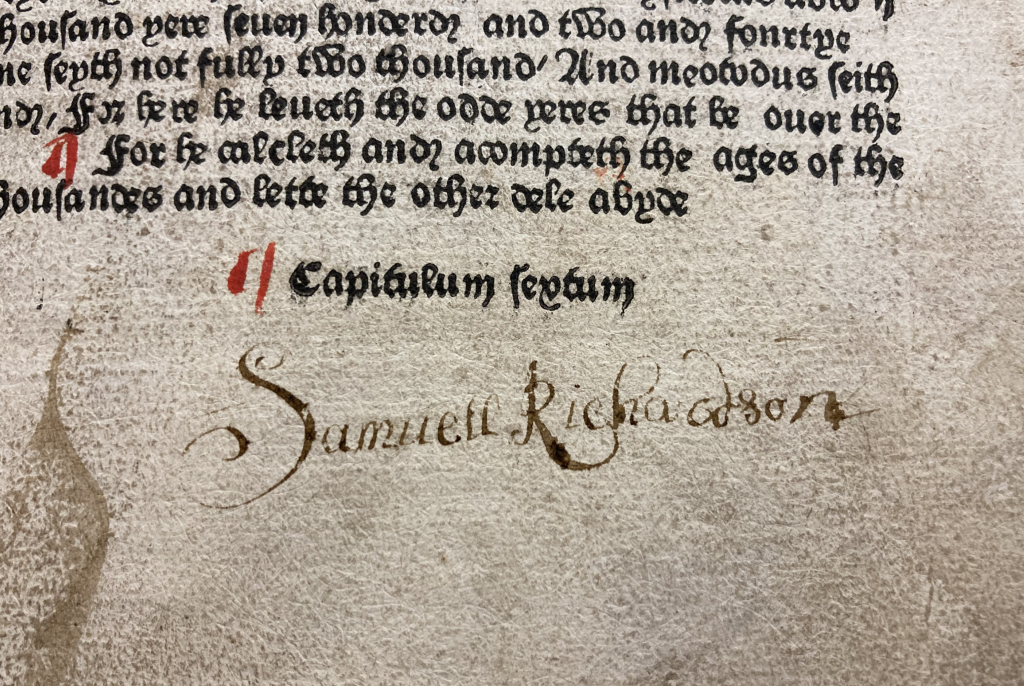
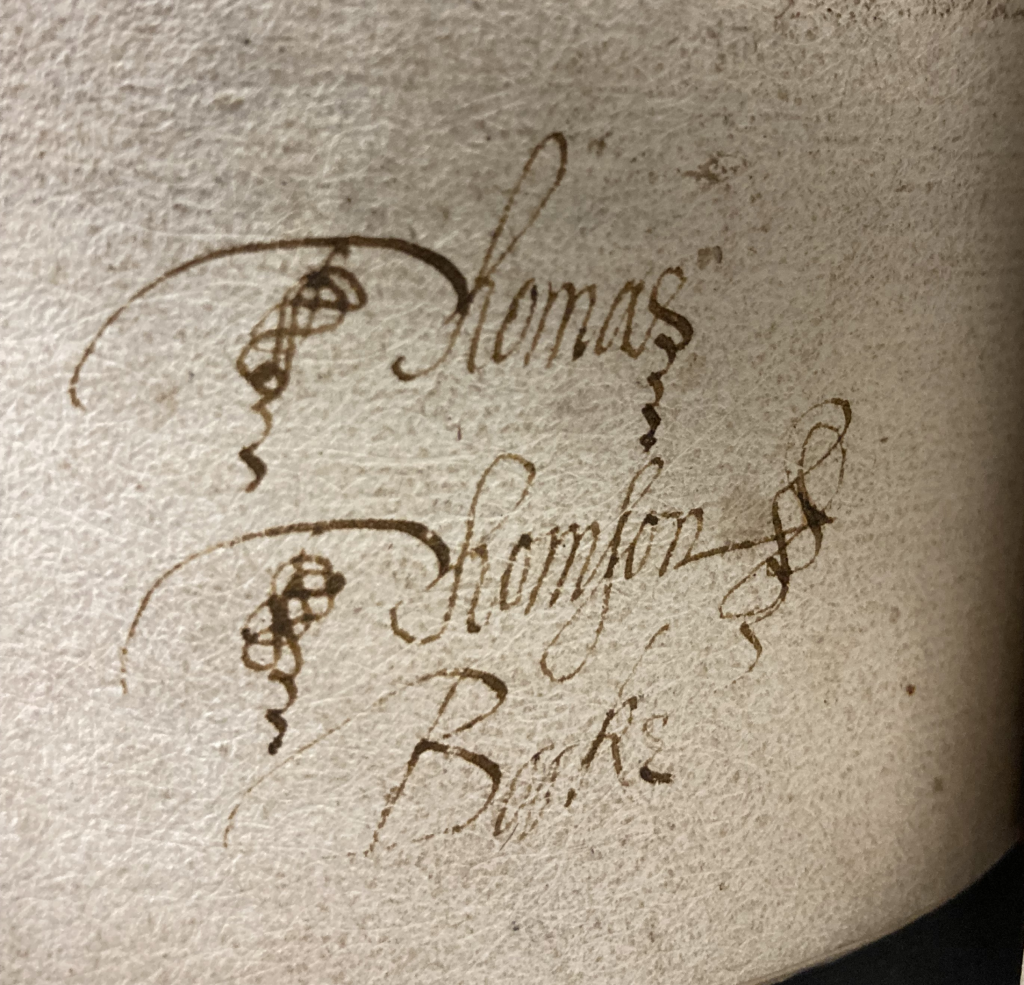
One previous owner has also made good use of the blank space at the end of the fourth book, with some particularly intriguing images:
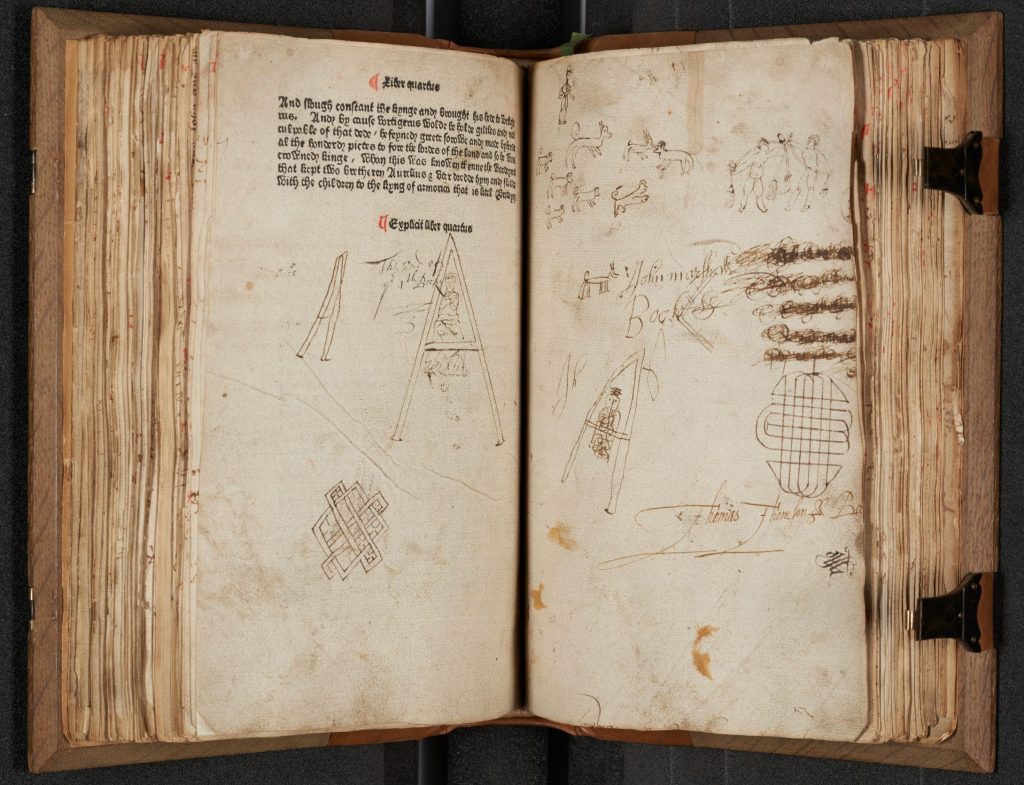
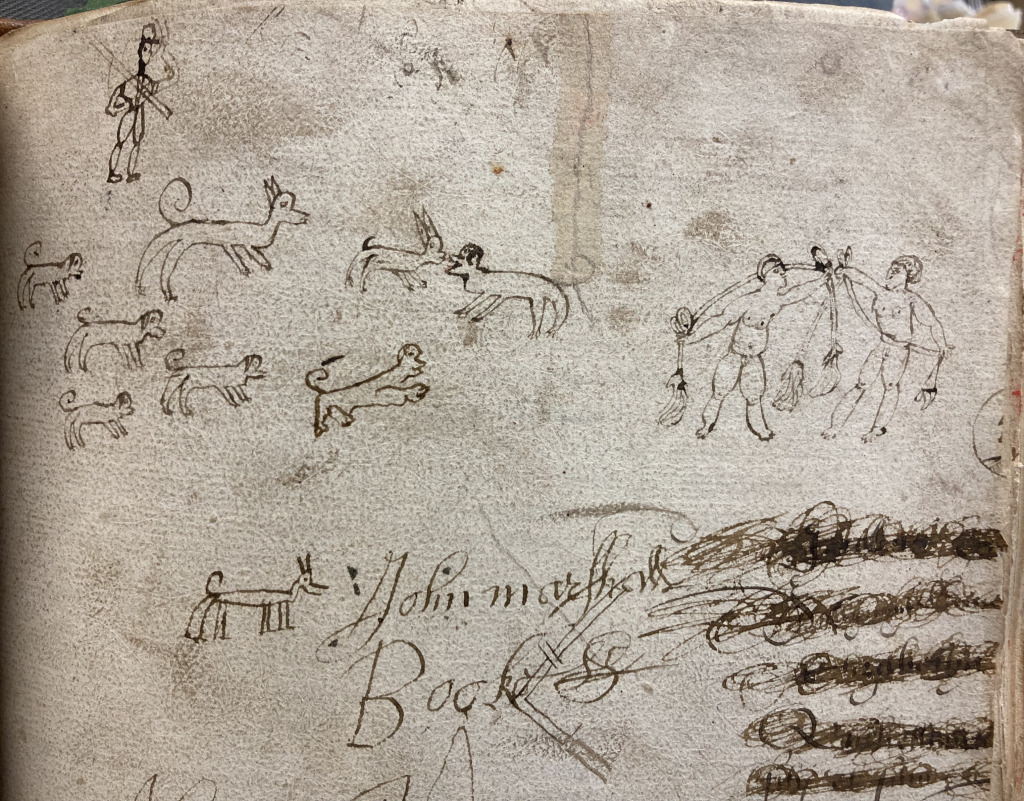
And, if you look closely, you will be able to see that some marginal notes have been dissected where the pages were later trimmed during rebinding:
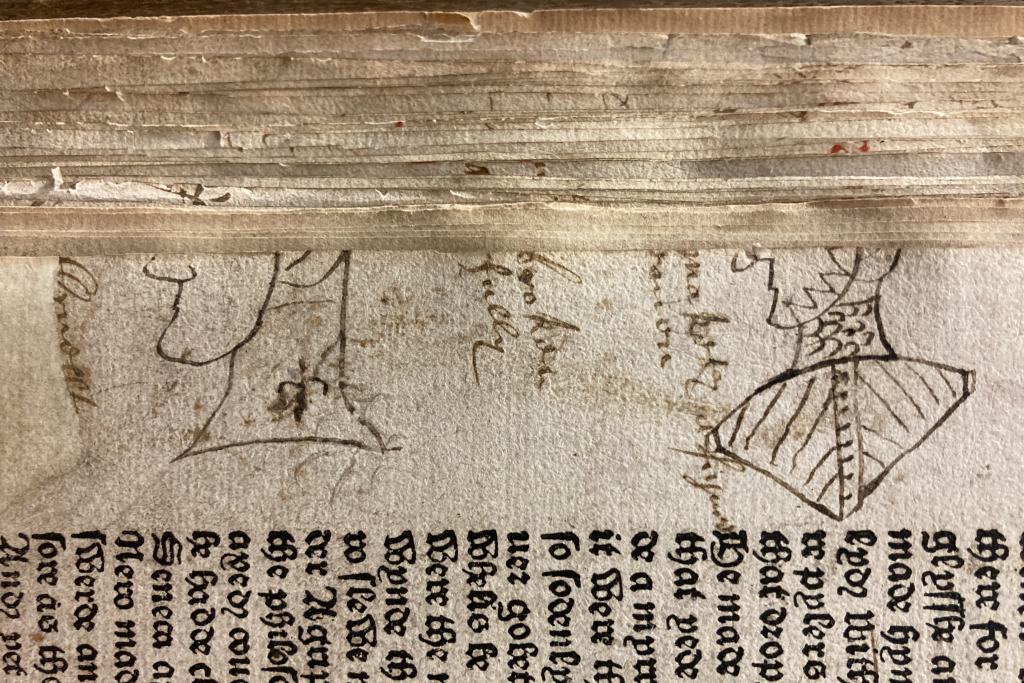
The book was purchased for the University by Charles Sydney Jones in 1921, from the Liverpool bookseller, Henry Young. When it was accessioned it was recorded as being bound in cloth, so the current binding of leather, wooden boards and brass clasps, is likely to have been given to it by Rivière & Son at some point soon after 1921.
A second copy at the University of Liverpool, Inc.RGM.03, also sports much marginalia. It was donated to the University by Robert George Morton in 1969, having previously been owned by John Crichton Stuart, 2nd Marquess of Bute (1793-1848).
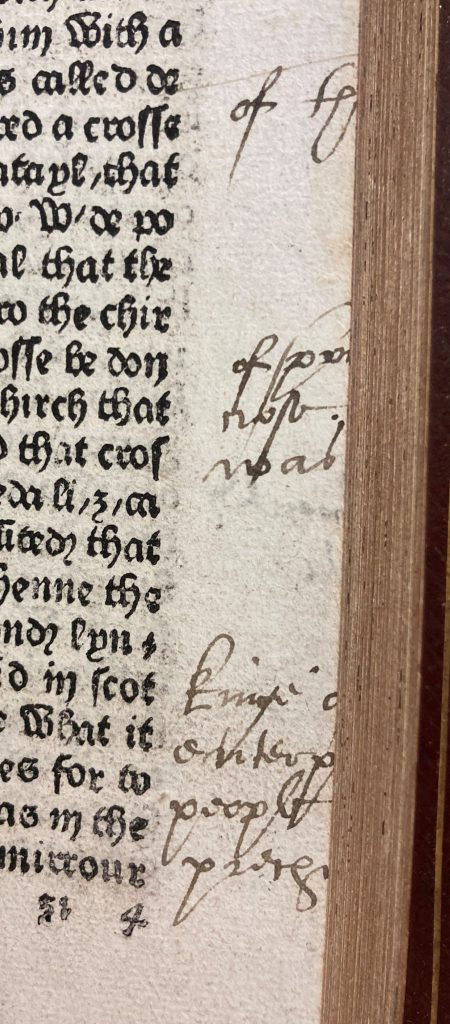
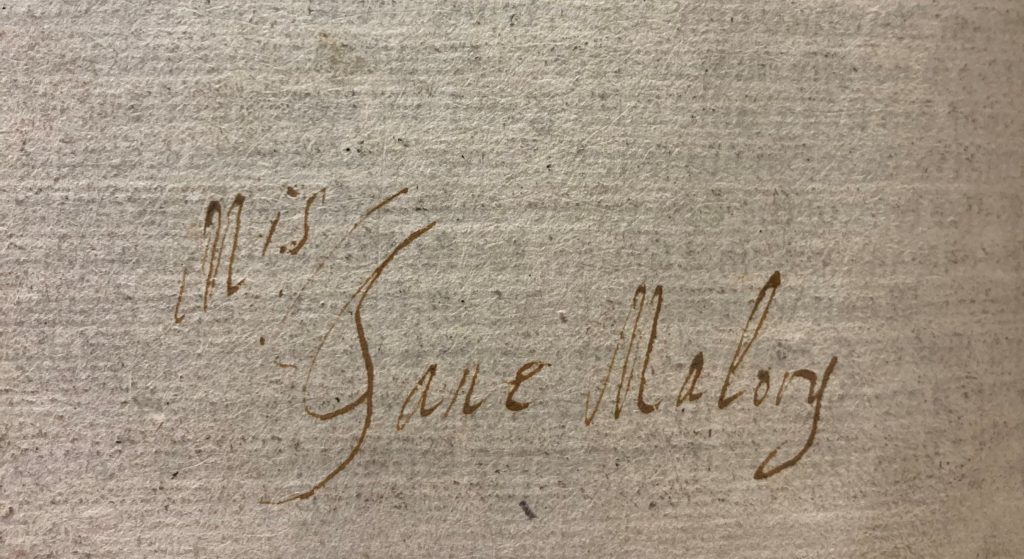
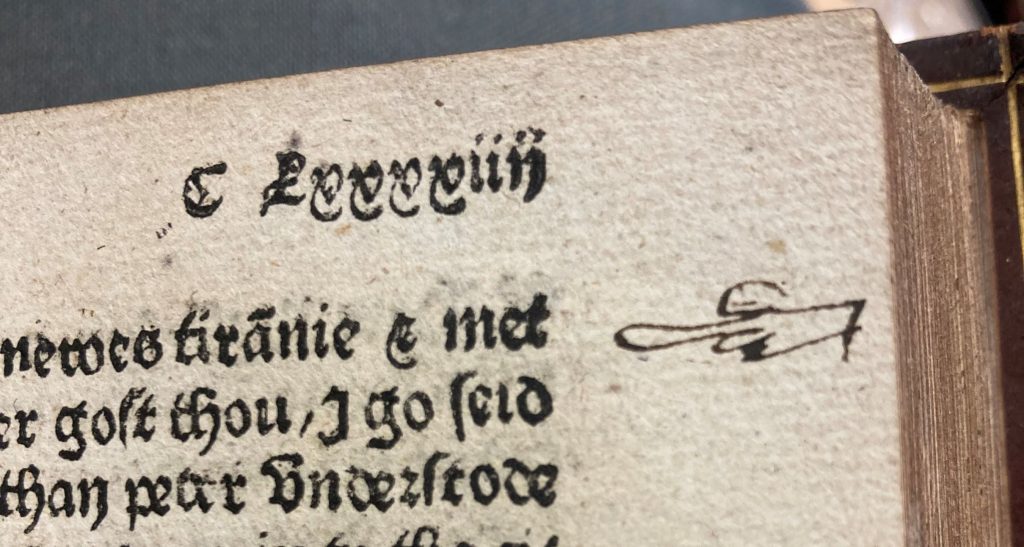
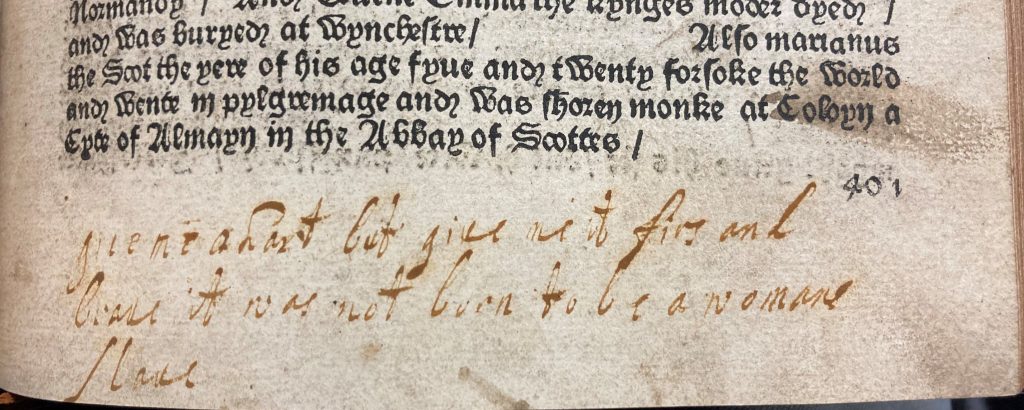
If this short blog post has piqued your interest, you can find provenance information for 26 other copies of Caxton’s Polychronicon in the Material Evidence in Incunabula database, and more brief information for many more than that in De Ricci’s A Census of Caxtons (1909).
References and further reading:
Given-Wilson, Chris, Chronicles: the Writing of History in Medieval England, London: Hambledon and London, 2004.
Blades, William, The Life and Typography of William Caxton, England’s First Printer, Cambridge: Cambridge University Press, 2014 (first published 1863). Accessed online, 17/08/2023.
Tonry, Kathleen, “Reading History in Caxton’s Polychronicon”, Journal of English and Germanic Philology, 111:2, April 2012. Accessed online, 17/08/2023. Project MUSE – Reading History in Caxton’s Polychronicon (oclc.org)
Blake, N.F., “Caxton, William”, Oxford Dictionary of National Biography, published online 23 September 2004, accessed online 23/08/2023.
Taylor, John, “Higden, Ranulf”, Oxford Dictionary of National Biography, published online 23 September 2004, accessed online 23/08/2023.
Wolf, D.R., “Genre into Artifact: the Decline of the English Chronicle in the Sixteenth Century”, The Sixteenth Century Journal, 19.3, 321-354. Accessed online via JSTOR, 23/08/2023.
